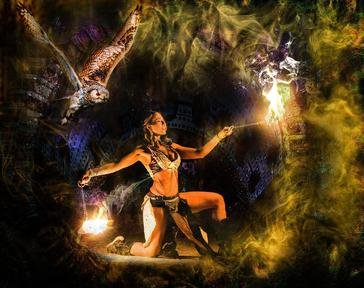
Take Hands with your Partner Trivia Quiz
Take hands with your partner and come and join in some folk dancing. I'll briefly describe some movements, and you pick the name from the list given. By the end of this quiz I hope you will have learnt a new contra dance and a new square dance.
A matching quiz
by Lottie1001.
Estimated time: 5 mins.
- Home
- »
- Quizzes
- »
- Humanities Trivia
- »
- Performing Arts
- »
- Dance